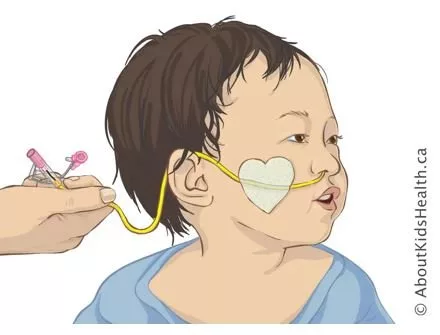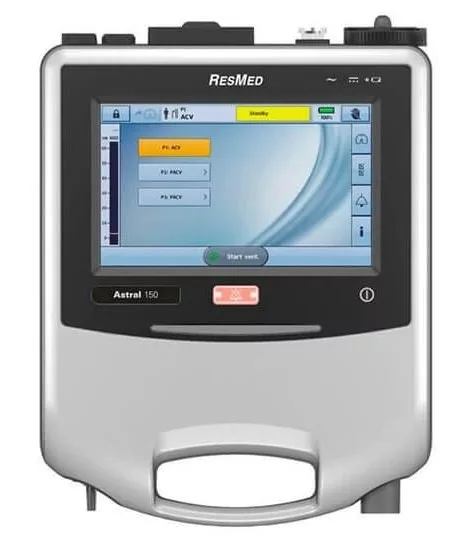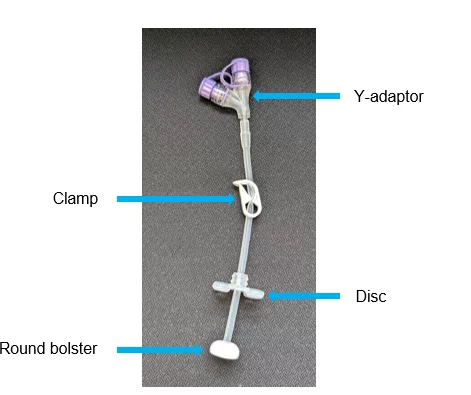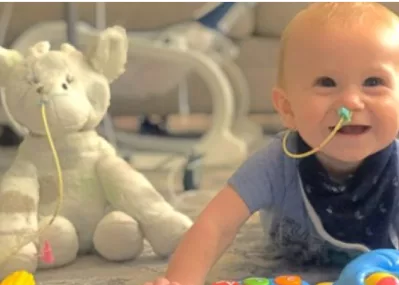SITUATION:
This QuickHit was informed by family caregivers who have initiated consults through Connected Care Live for support when the Bel clamp on their child’s combination gastrostomy/gastro-jejunostomy (G/GJ) tube breaks.
BACKGROUND:
Many children with medical complexity rely on enteral feeding tubes to support nutrition, hydration and/or medication administration. Combination G/GJ tubes, such as the MIC ™ PEG J or CORFLO™ PEG J, provide fluids, nutrition and medication directly to the small intestine (jejunum), while still providing access to the stomach for venting.
A combination G/GJ tube consists of two separate tubes:
- CORFLO ™ or MIC ™ PEG tube – a type of G tube that allows access to the stomach. This is the gastric (G) part of the tube and is usually used for venting (accessed via the orange cap in image).
- Silastic tube – threaded through the CORFLO™ PEG or MIC™ PEG tube and placed in the jejunum. This is the gastrojejunal (GJ) part of the tube and is used for fluids, nutrition and medication (accessed via the purple caps in image).
The Bel clamp is a 3D printed, white plastic securement device that holds the silastic tube in place. It prevents the GJ tube from being dislodged from the CORFLO™ PEG or MIC™ PEG tube.
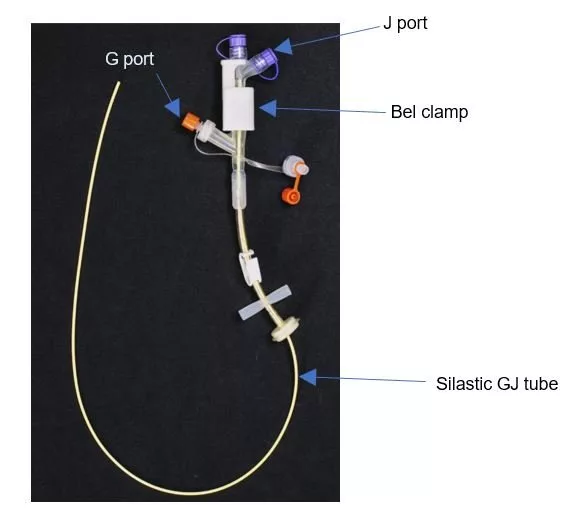
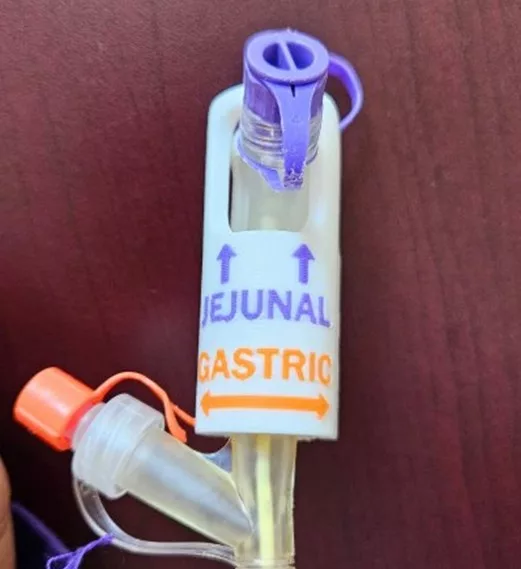
ASSESSMENT:
The Bel clamp holds the silastic GJ tube in place. It is made up of two pieces and is secured on the tube after insertion. The images below outline how the Bel clamp is secured to the tube after insertion in hospital.
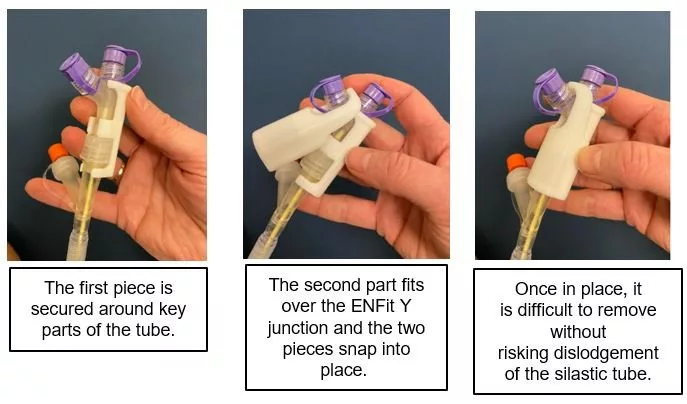
When caring for a child with a CORFLO™ PEG J or MIC™ PEG J, check the Bel clamp to ensure that it is in the correct position and assess for any breaks or cracks. If the Bel clamp is broken or comes apart, the silastic GJ tube may become dislodged.
RECOMMENDATION:
Connected Care recommends the following to manage a Bel clamp that breaks or comes apart:
- If a Bel clamp is broken, try to tape it in place to avoid movement or dislodgement of the silastic GJ tube. Contact your child’s G tube specialist to have the Bel clamp replaced.
- If the silastic GJ tube becomes dislodged partially or fully, do not push it back in. Measure how much of it has dislodged using a measuring tape.
- If the silastic GJ tube is dislodged less than 5cm:
- Secure it in place with tape.
- You may continue to use the child’s G/GJ tube for fluid, nutrition and medications, if tolerated.
- Contact your child’s G tube specialist during business hours to have the Bel clamp replaced.
- If the silastic GJ tube is dislodged more than 5cm:
- Secure it in place with tape.
- Do not use the child’s G/GJ tube for fluid, nutrition, and medications. The position of the tube will need to be fixed by an interventional radiologist. Contact your child’s G tube specialist during business hours for this to be arranged.
- If this happens after hours and the child requires fluids, nutrition or medications, seek medical attention in the Emergency Department.
- If the silastic GJ tube is dislodged less than 5cm:
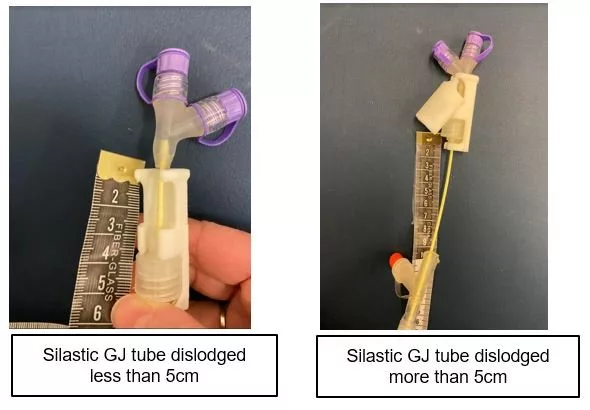
The following symptoms may indicate that the silastic GJ tube has migrated out of the small intestine and into the stomach. If you notice these signs or are concerned for tube migration, stop using the tube as the position needs to be confirmed.
- Increased vomiting
- Vomiting formula
- Gagging and retching
- Abdominal discomfort or pain
- Bloated abdomen
- Diarrhea
- Formula leaking out of G port
More information
Review the AboutKidsHealth article about MIC PEG J tubes , Corflo PEG J tubes, managing dislodgements and tube migration.


